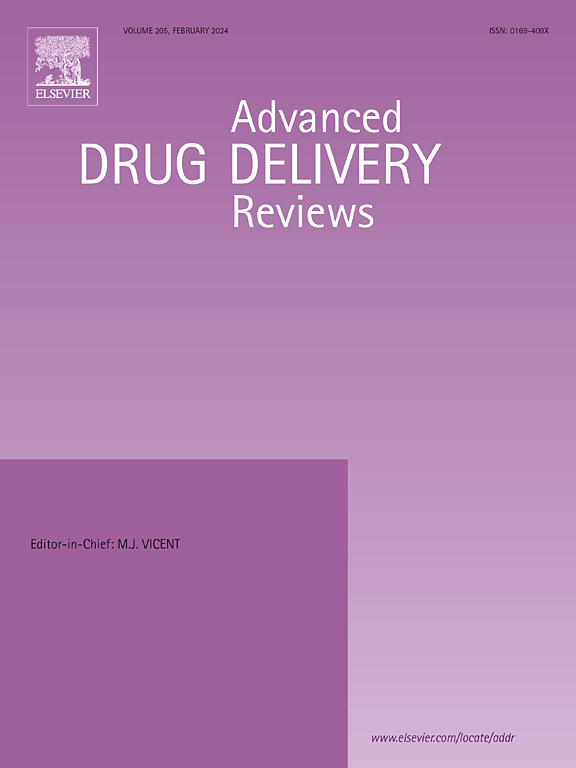Circadian attributes of neurological and psychiatric disorders as basis for their medication chronotherapy
IF 17.6
1区 医学
Q1 PHARMACOLOGY & PHARMACY
引用次数: 0
Abstract
This review focuses on (i) 24 h patterns in the symptom intensity of common neurologic and psychiatric disorders and (ii) medications prescribed for their management that have a recommended administration time or schedule, presumably to potentiate desired and minimize undesired effects and by definition qualify them as chronotherapies. Predictable-in-time patterning of symptoms is exhibited by many neurologic –– headaches, multiple sclerosis, neurogenic orthostatic hypotension, neuropathic pain, Parkinson’s disease, epileptic seizure, attention deficit hyperactivity, Alzheimer’s disease – and psychiatric – eating, depressive, obsessive–compulsive, post-traumatic stress, anxiety, and panic – disorders, due either to circadian rhythms of disease pathophysiology or inadequacies of medication-delivery systems. Circadian disruption and circadian misalignment of the sleep-wake and other 24 h rhythms plus late chronotype are characteristic of many of these disorders, suggesting involvement in the mechanisms or consequence of their pathology or as an adverse effect of therapy, especially when administered at an inappropriate biological time. The Prescribers’ Digital Reference, a compendium of all prescription medications approved for marketing in the US, reveals 65 of them are utilized to manage neurologic and psychiatric disorders by a specified time-of-day or an asymmetrical interval or strength of dose schedule, presumably to optimize beneficial and minimize adverse effects, thereby qualifying them as chronotherapies. Overall, the contents of this review are intended to inform the development of future chronotherapies that incorporate state-of-the-art drug-delivery systems to improve management of neurologic and psychiatric disorders and associated circadian malalignment and disruption.


神经和精神疾病的昼夜节律属性作为其药物时间疗法的基础
本综述着重于(i)常见神经和精神疾病症状强度的24 h模式,以及(ii)有推荐给药时间或时间表的治疗药物,可能是为了增强期望的效果和最小化不希望的效果,并根据定义将其限定为时间疗法。许多神经性头痛、多发性硬化症、神经性直立性低血压、神经性疼痛、帕金森氏病、癫痫发作、注意力缺陷多动、阿尔茨海默病和精神性饮食、抑郁、强迫症、创伤后应激、焦虑和恐慌症都表现出可预测的症状模式,这要么是由于疾病病理生理的昼夜节律,要么是由于药物输送系统的不足。昼夜节律紊乱和昼夜节律失调以及其他24 h节律加上晚时型是许多这些疾病的特征,这表明参与其病理机制或后果,或作为治疗的不利影响,特别是在不适当的生物学时间给予治疗时。处方者数字参考(prescriber’Digital Reference)是一份美国批准上市的所有处方药的概要,显示其中65种药物是通过推荐的特定时间或不对称间隔或剂量计划强度来治疗神经和精神疾病的,可能是为了优化有益效果并最大限度地减少不良反应,从而使它们成为时间疗法。总的来说,本综述的内容旨在为未来时间疗法的发展提供信息,这些疗法将结合最先进的药物输送系统,以改善神经和精神疾病以及相关昼夜节律失调和中断的管理。
本文章由计算机程序翻译,如有差异,请以英文原文为准。
求助全文
约1分钟内获得全文
求助全文
来源期刊
CiteScore
28.10
自引率
5.00%
发文量
294
审稿时长
15.1 weeks
期刊介绍:
The aim of the Journal is to provide a forum for the critical analysis of advanced drug and gene delivery systems and their applications in human and veterinary medicine. The Journal has a broad scope, covering the key issues for effective drug and gene delivery, from administration to site-specific delivery.
In general, the Journal publishes review articles in a Theme Issue format. Each Theme Issue provides a comprehensive and critical examination of current and emerging research on the design and development of advanced drug and gene delivery systems and their application to experimental and clinical therapeutics. The goal is to illustrate the pivotal role of a multidisciplinary approach to modern drug delivery, encompassing the application of sound biological and physicochemical principles to the engineering of drug delivery systems to meet the therapeutic need at hand. Importantly the Editorial Team of ADDR asks that the authors effectively window the extensive volume of literature, pick the important contributions and explain their importance, produce a forward looking identification of the challenges facing the field and produce a Conclusions section with expert recommendations to address the issues.

 求助内容:
求助内容: 应助结果提醒方式:
应助结果提醒方式:


